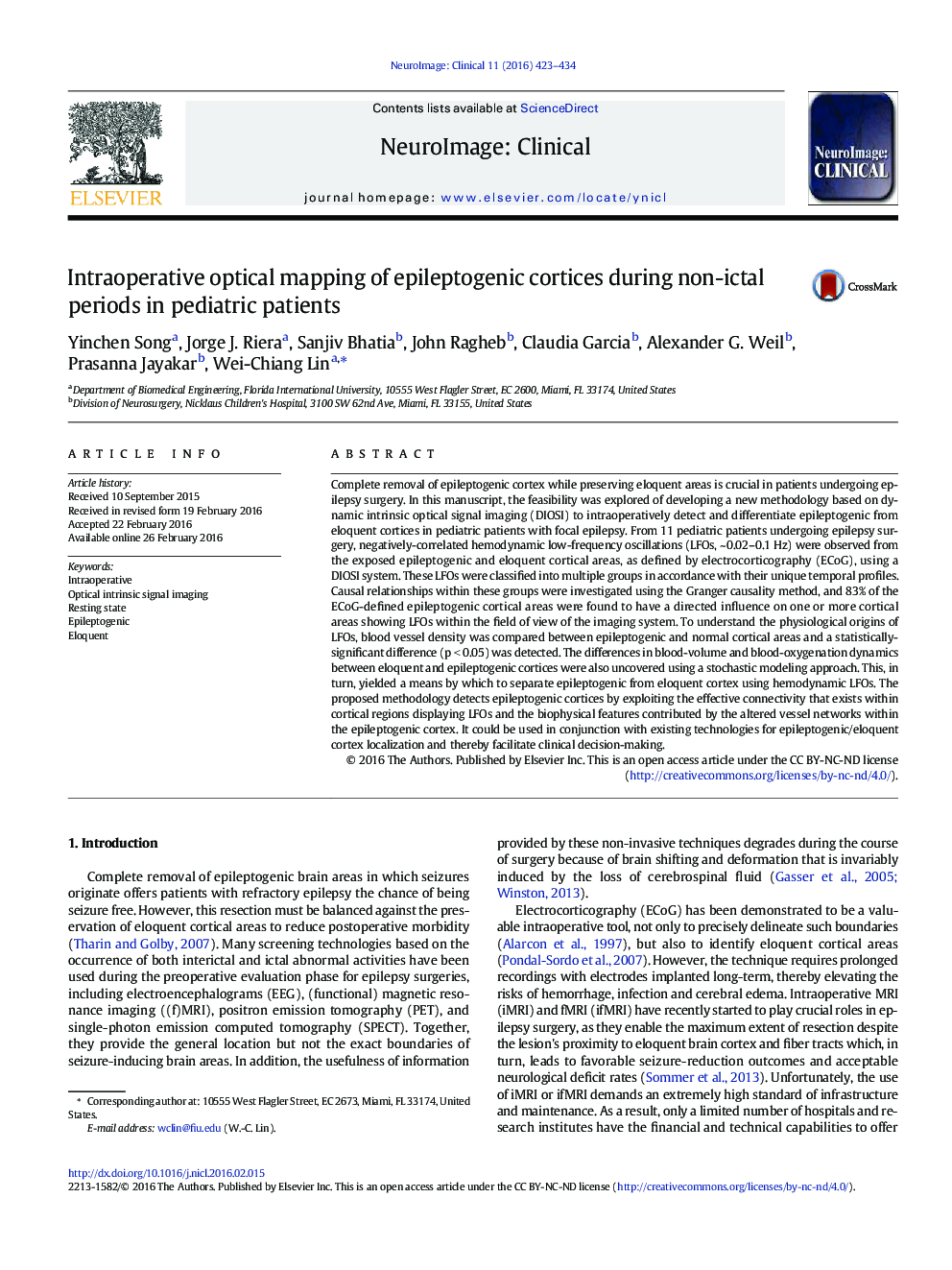| کد مقاله | کد نشریه | سال انتشار | مقاله انگلیسی | نسخه تمام متن |
|---|---|---|---|---|
| 3074934 | 1580956 | 2016 | 12 صفحه PDF | دانلود رایگان |
• Low-frequency hemodynamic oscillations (~ 0.02–0.1 Hz) in epileptogenic cortex
• High sensitivity (93%) and adequate specificity (70%) in differentiating epileptogenic cortex from eloquent one
• Significant changes in vessel density (p < 0.05) in epileptogenic cortex
• No need for external stimulation or reduction in anesthesia
Complete removal of epileptogenic cortex while preserving eloquent areas is crucial in patients undergoing epilepsy surgery. In this manuscript, the feasibility was explored of developing a new methodology based on dynamic intrinsic optical signal imaging (DIOSI) to intraoperatively detect and differentiate epileptogenic from eloquent cortices in pediatric patients with focal epilepsy. From 11 pediatric patients undergoing epilepsy surgery, negatively-correlated hemodynamic low-frequency oscillations (LFOs, ~ 0.02–0.1 Hz) were observed from the exposed epileptogenic and eloquent cortical areas, as defined by electrocorticography (ECoG), using a DIOSI system. These LFOs were classified into multiple groups in accordance with their unique temporal profiles. Causal relationships within these groups were investigated using the Granger causality method, and 83% of the ECoG-defined epileptogenic cortical areas were found to have a directed influence on one or more cortical areas showing LFOs within the field of view of the imaging system. To understand the physiological origins of LFOs, blood vessel density was compared between epileptogenic and normal cortical areas and a statistically-significant difference (p < 0.05) was detected. The differences in blood-volume and blood-oxygenation dynamics between eloquent and epileptogenic cortices were also uncovered using a stochastic modeling approach. This, in turn, yielded a means by which to separate epileptogenic from eloquent cortex using hemodynamic LFOs. The proposed methodology detects epileptogenic cortices by exploiting the effective connectivity that exists within cortical regions displaying LFOs and the biophysical features contributed by the altered vessel networks within the epileptogenic cortex. It could be used in conjunction with existing technologies for epileptogenic/eloquent cortex localization and thereby facilitate clinical decision-making.
Journal: NeuroImage: Clinical - Volume 11, 2016, Pages 423–434
